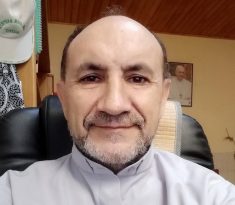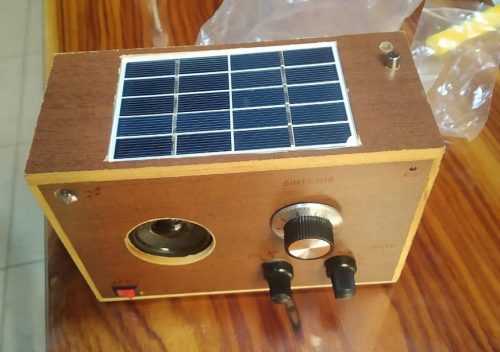By Lucien Chauvin | Catholic News Service
LIMA, Peru (CNS) — The Apostolic Vicariate of Iquitos, in Peru’s northern jungle, wants to be ready when students start school March 15.
The vicariate does not run schools, but it has a plan to make sure students do not miss out on the academic year, which will likely start off as 2020 ended, with virtual instead of in-person learning.
By March, the vicariate plans to have 2,500 digital radio receivers ready to distribute to homes along the banks of major jungle rivers, including the Amazon, so students can tune in to the government’s distance learning program, Learn at Home, and continue with their education when classes begin.

“We have thousands of students in communities whose families do not have resources to buy a radio or TV, so they do not have access to the program,” Augustinian Father Miguel Fuertes, vicariate administrator, told Catholic News Service.
He said that the farther communities are from Iquitos, capital of the Loreto department, the greater the chance that they do not have electricity, adding another wrinkle to the problem.
Learn at Home was put together quickly last year, when Peru’s government declared the first lockdown on the day classes were supposed to start in March. Peru did not have in-person classes in 2020 and decided to pass all students.
The distance learning program relied mainly on the internet in urban areas, but relied on radio and TV stations in many areas where connectivity is low and where the vast majority of people do not have computers.
It worked in Iquitos, but participation was not as robust in rural areas, particularly in Indigenous communities. In September, the Education Ministry reported that the dropout rate in the country’s jungle regions was as high as 30% because of a combination of factors, including lack of basic services. Loreto placed last in 2019 among Peru’s 25 departments in households with access to piped water, 59%, and electricity, 83.2%, according to the National Statistics and Information Institute.
A contributing factor in Loreto, where the dropout rate approached 50% in some areas, was the pandemic. It was the first area in Peru where the health sector was overrun, and it led the country in the number of deaths in the initial months of the crisis. Research by the tropical medicine institute at Peru’s Cayetano Heredia University now postulates that as high as 70% of the population in Iquitos may have been exposed to the virus.

The department, the largest in Peru, is roughly the same size as the U.S. state of Montana. It has a population of roughly 1 million, with half living in and around Iquitos. It is home to 29 of Peru’s different ethnic groups — 57% of the total — and 705 Indigenous communities.
In August, the federal government published another plan to “close social gaps” by investing $1.5 billion in Loreto, primarily in Indigenous communities. The move came after three Kukama Indigenous people were killed in a clash with police officers while protesting the state’s failure to follow through on promises.
Students and teachers in Loreto are getting around 10% of the 1 million tablets the state has been distributing for distance learning. The vicariate’s program will provide another avenue to help students learn.
The vicariate is collaborating with local workshops in Iquitos to build the radio receivers that it will start distribution in a few weeks. The initial plan is to get the 2,500 receivers to students and, resources permitting, increase that to 7,000 in the coming months. The receivers come with a small solar power cell and rechargeable battery. Each receiver costs approximately $23 to make.
The vicariate is building an AM transmitter to broadcast the distance-learning program. The big radio stations in the region, including the vicariate’s La Voz de la Selva (Voice of the Jungle) station, are FM frequency that will not be picked up by the new receivers.
“The receivers and the new transmitter will let kids be able to take part in the school year,” said Father Fuertes.






















